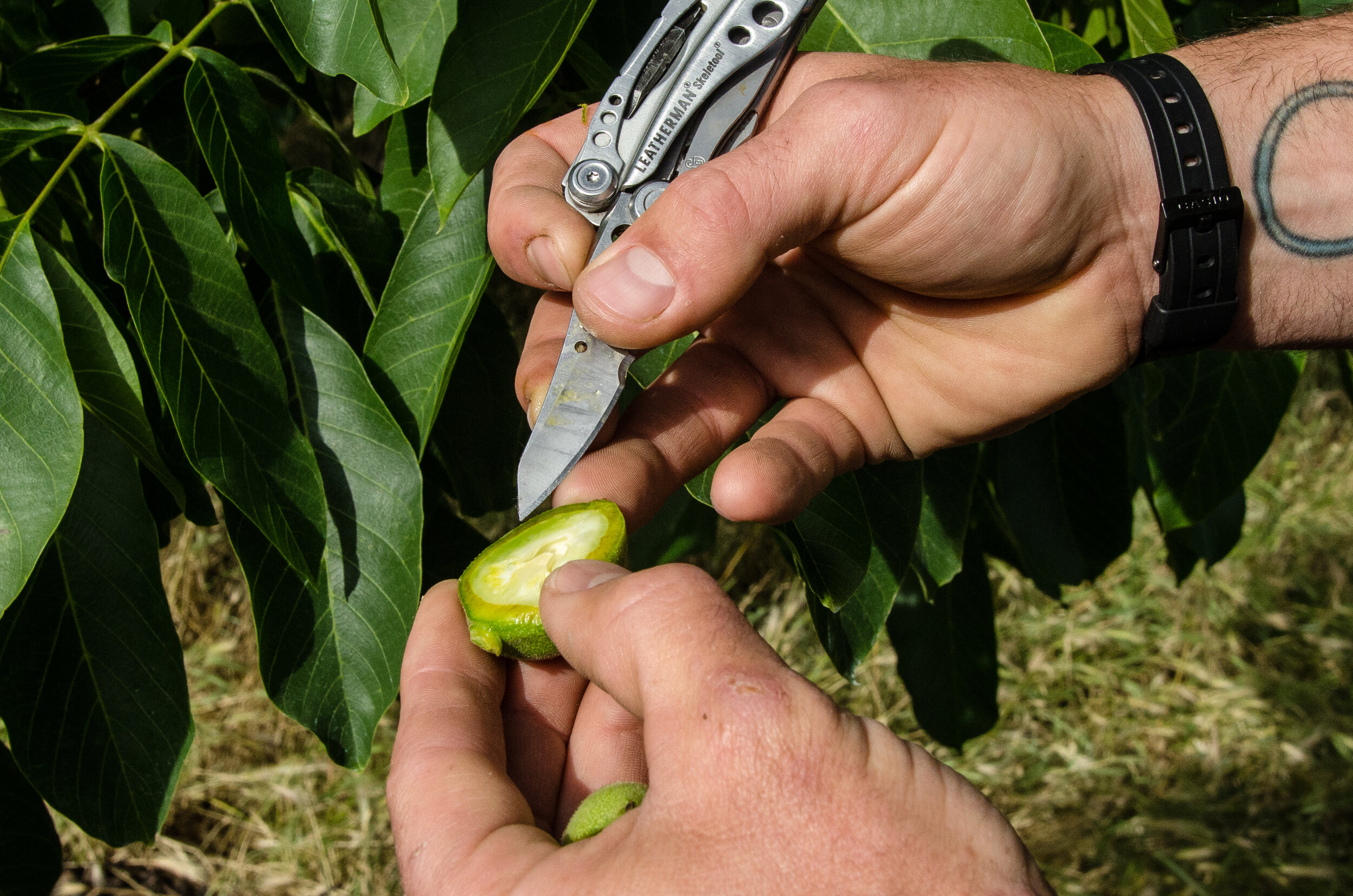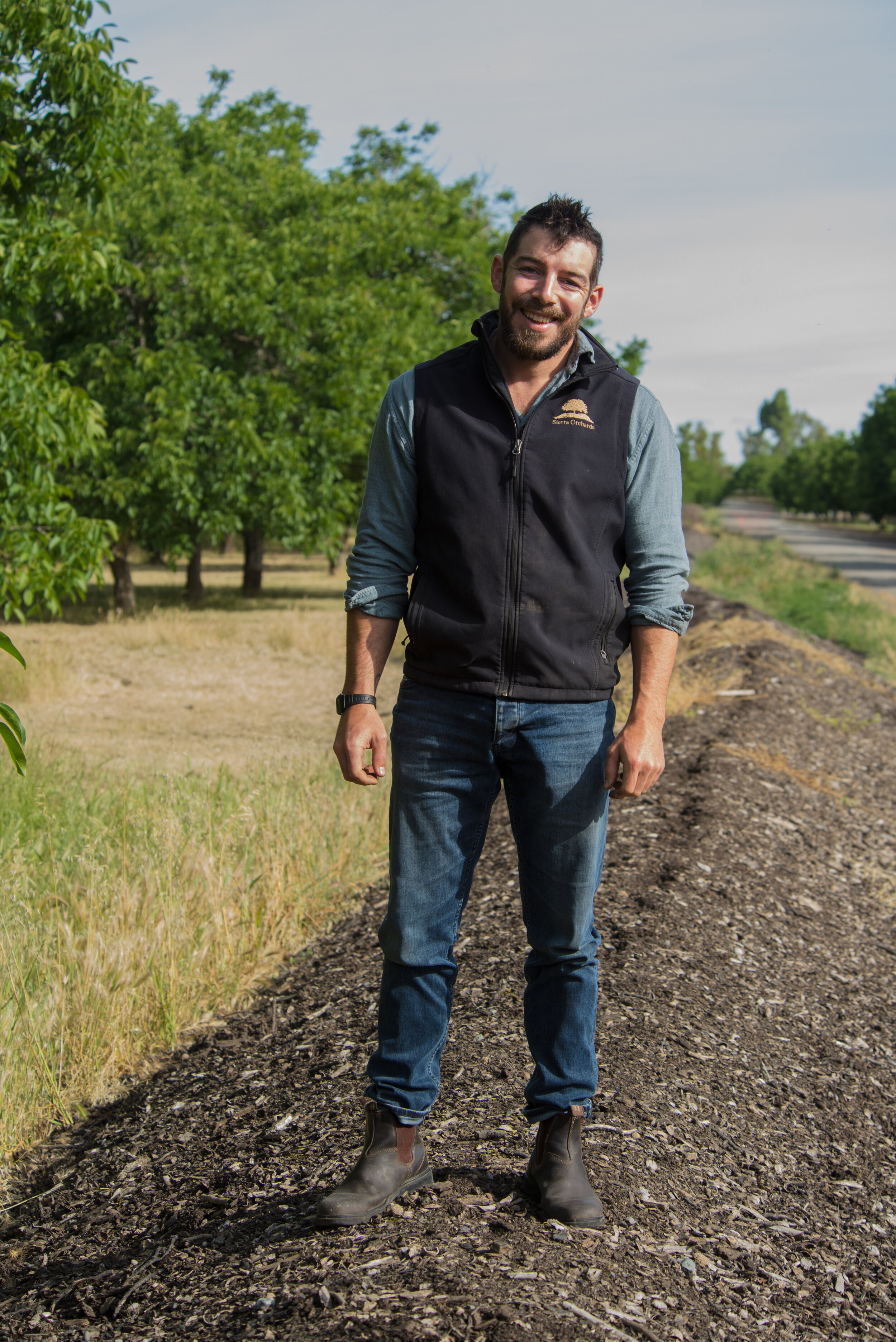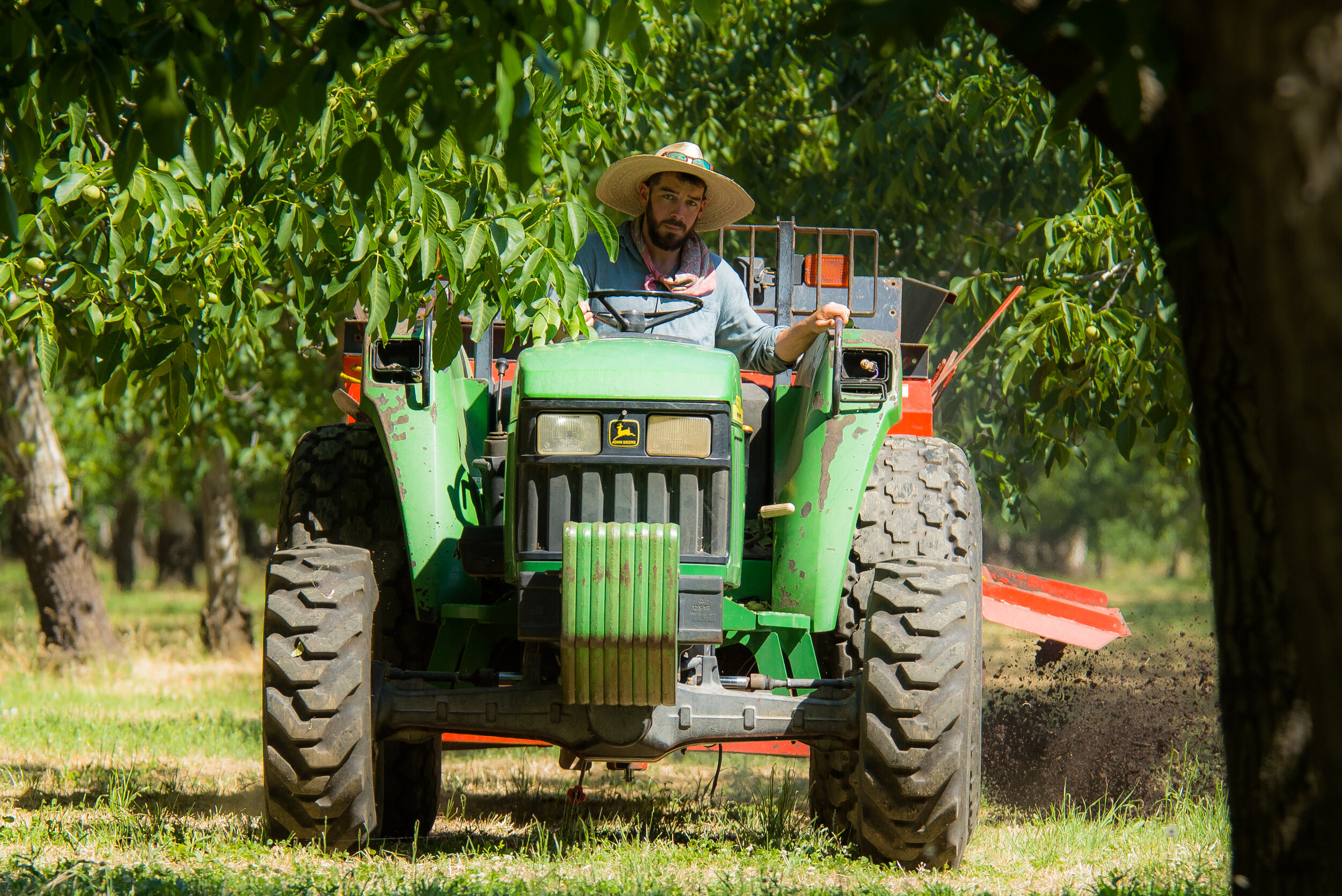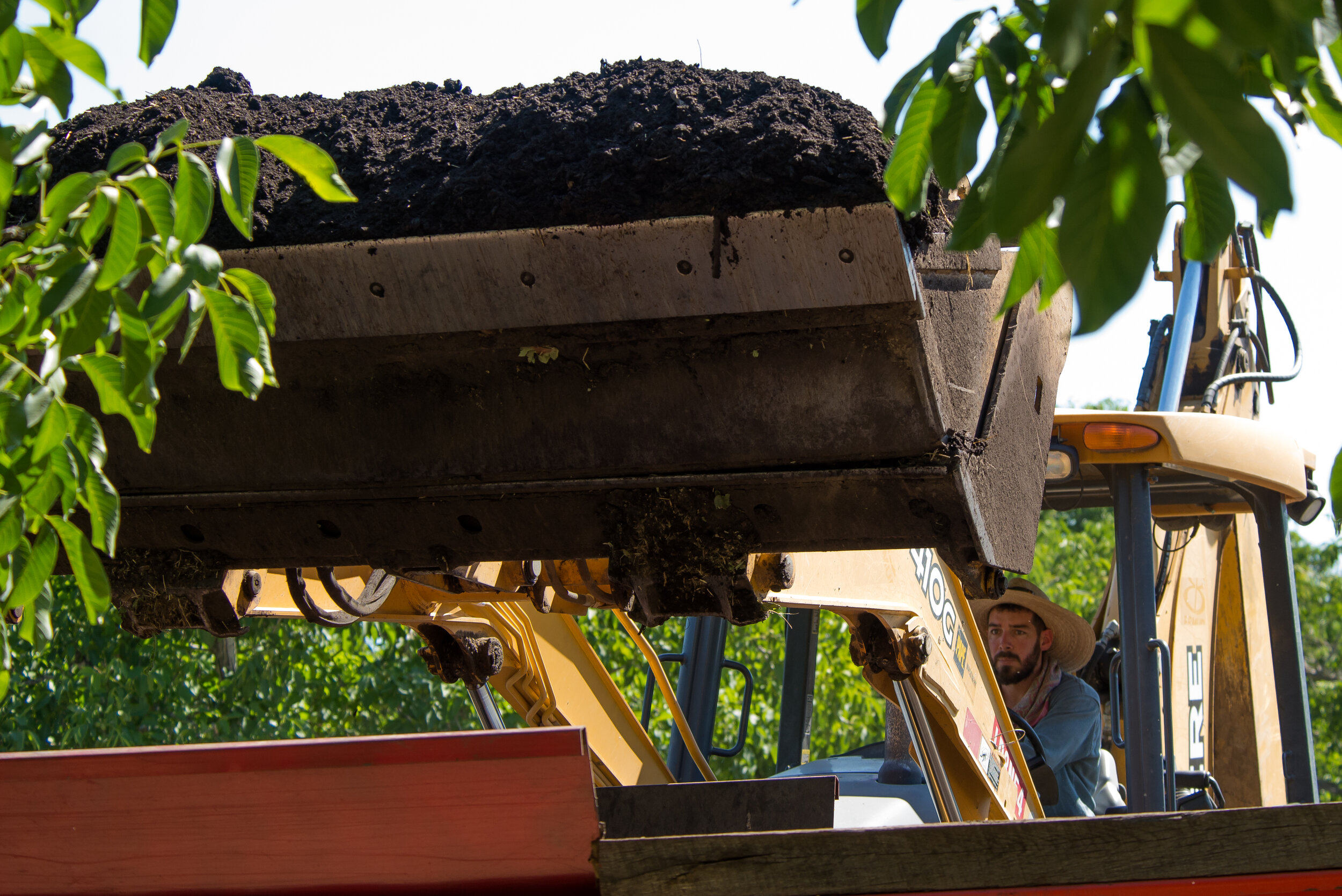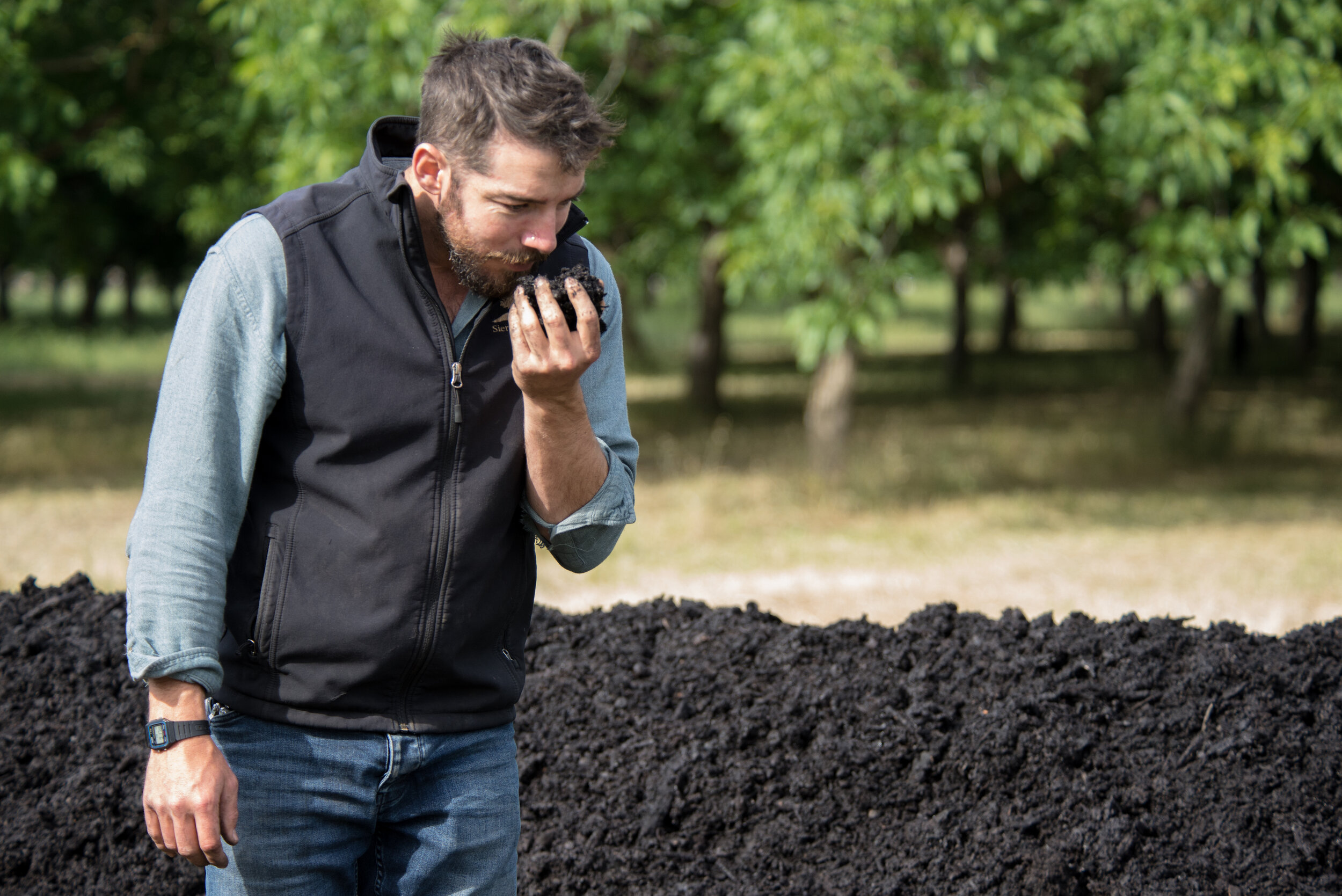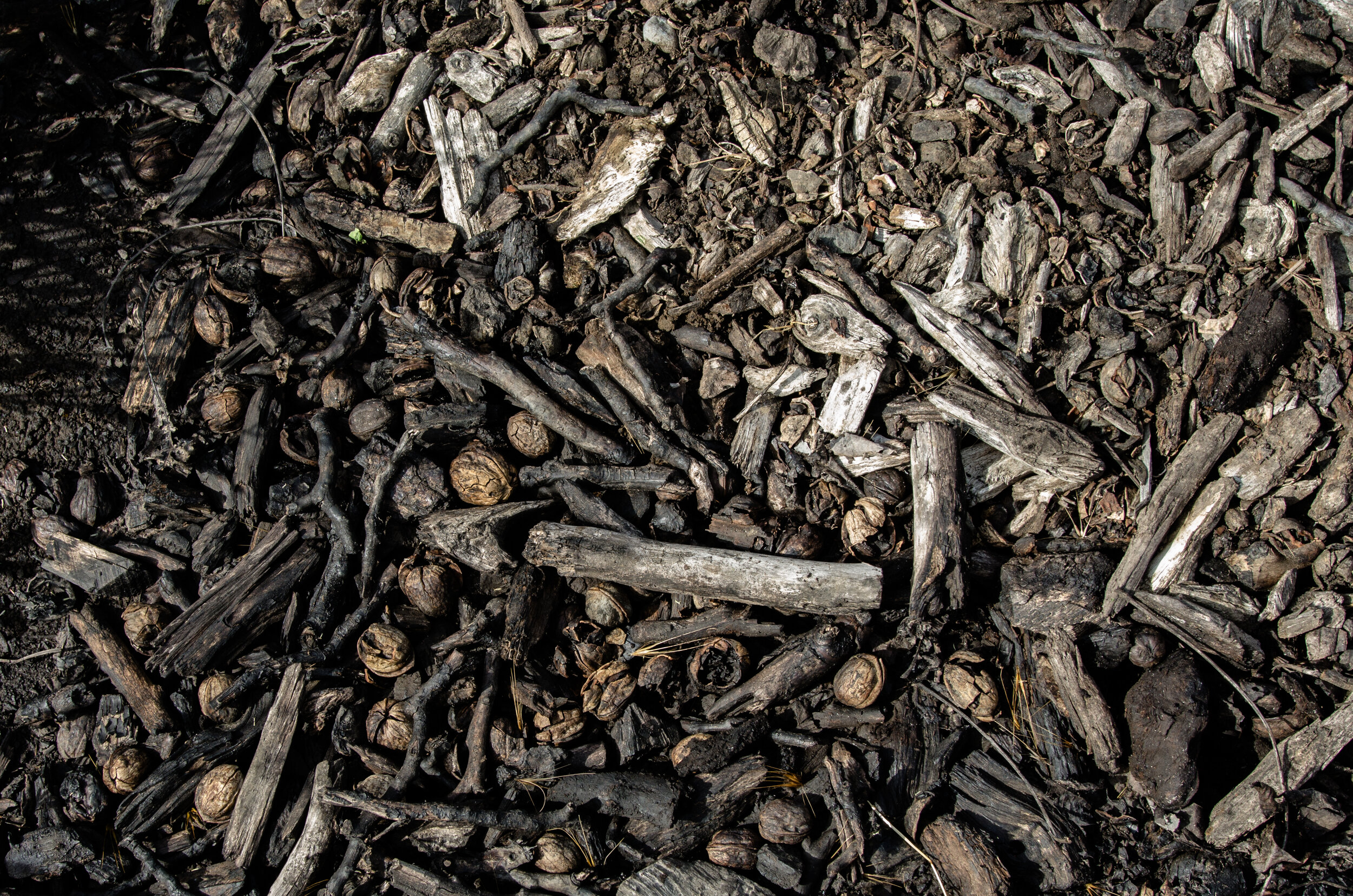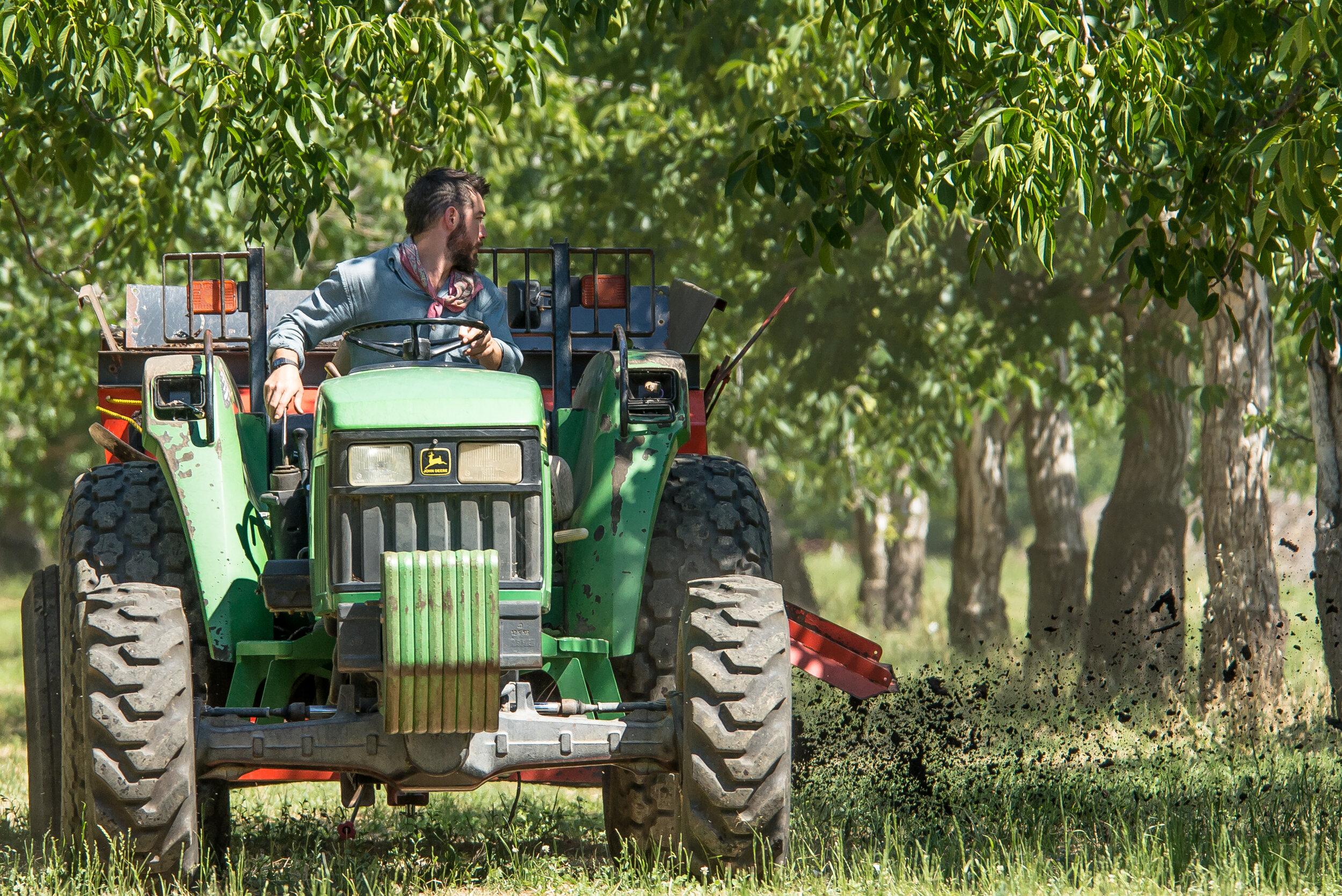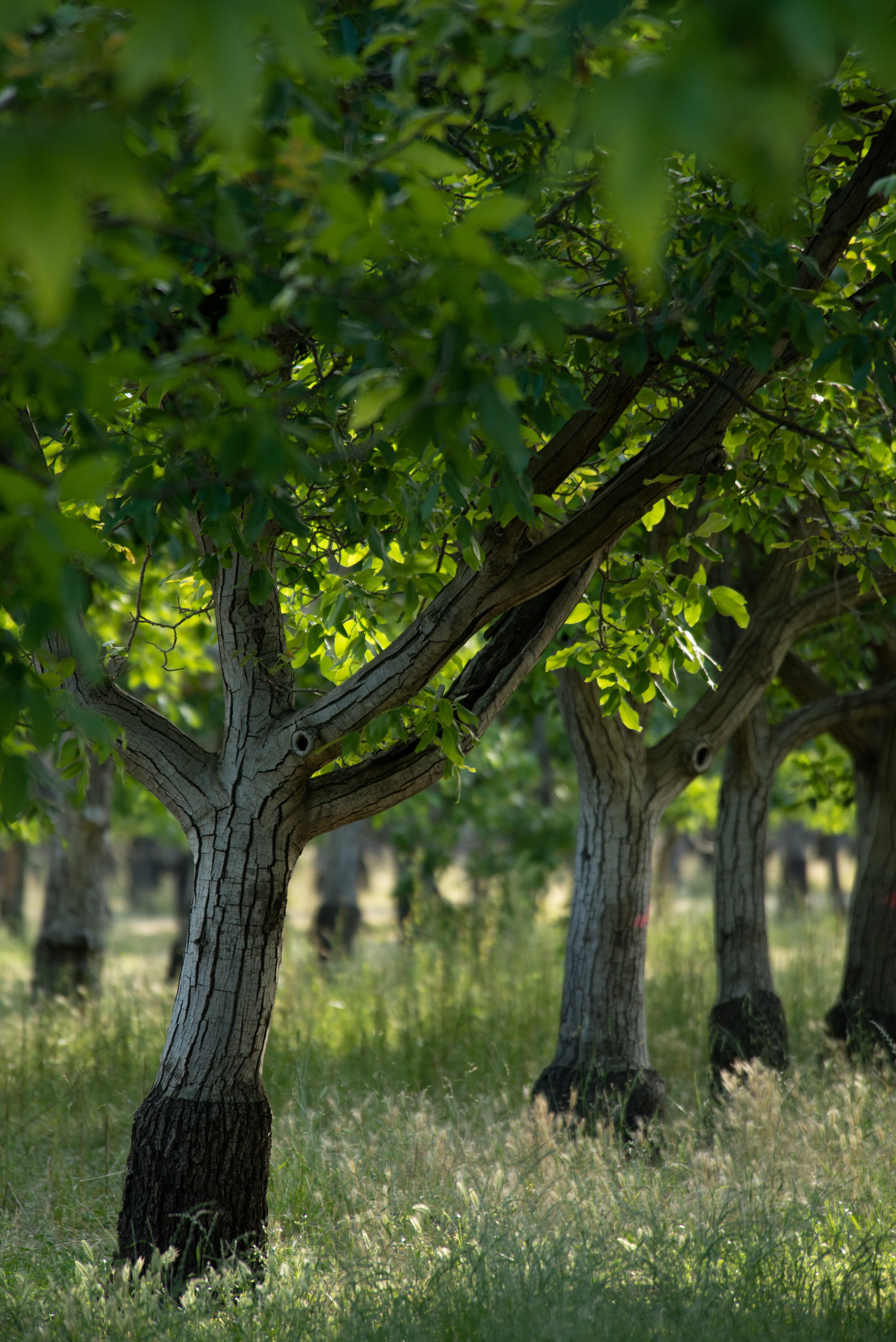Rethinking the Walnut Waste Stream - The Furrow
By Laura Read
Five years ago, after finishing school at Georgetown University and then building nonprofit houses in Baltimore, Sean McNamara returned home to his family farm near Davis in California’s northern Central Valley. His parents, Craig and Julie McNamara, had bought a 460-acre property in 1980, and he’d grown up under the canopy of the trees riding nut buggies during harvest time, and munching sour grass in crude tree forts the rest of the year.
While Sierra Orchards was well-run and respected, there were a few methods that the then-26-year-old thought maybe could change. With the property purchase, his family had inherited a process of disposing the walnut hulls generated by their processing plant, or “huller,” into piles that lay disintegrating on their land along Putah Creek.
“My dad and I had a realization that it wasn’t fair to be dumping our hulls right along the edge of the creek.” McNamara says. “It was a way of brushing the problem under the rug. We weren’t proud of it, and we wanted to restore that area.”
Shell parts were already being ground up and used in sandblasting materials. McNamara wondered if the hulls couldn’t be used in compost somehow. Meanwhile, the family also was working on another important goal: improving the quality of its soil.
Trash or Treasure: At Georgetown McNamara, who is the grandson of former U.S. Secretary of Defense Robert McNamara, had majored in American Studies, a multidisciplinary field that blended his many interests into one stream, interests that included art, history, sociology and politics. An independent thinker, he had intended to go into urban planning, but the Great Recession had thrown him a curveball. Back at Sierra Orchards, looking for new ways to make the orchards more productive and better resistant to disease, McNamara found himself immersed in communities of a different kind — the endless webbed networks of fungi, bacteria, and minute earth-dwellers such as nematodes, arthropods, and protozoa. These are populations that make soil.
“The first thing was learning the magic and complexity of soil, and the differences between ag soil and wild soil, and asking the question how we could manage our ag soils more like wild soils, like soil in the forest,” McNamara says. “Fungi mycelium can perform all of the important jobs in the soil — the decomposition or conversion of organic matter and molecules into plant-available nutrients, the delivery of those nutrients to the roots of the tree, even the delivery of water to trees that are water stressed.”
He needed to set the stage for better fungi development in the soil, and he wanted to do that by reusing something that was already being generated on the farm, maybe by using the crushed limbs, leaves, and trunks left behind after orchard removal for compost. Was there anything else he could use, he wondered. Perhaps the abandoned piles of hulls….
Deep Research: His dad was initially skeptical about using the orchard leftovers, advising that it was important to keep any natural walnut trees threats, such as the parasitic fungi Armillaria, from overwhelming the compost. Additionally, there were questions about whether the hulls were toxic. McNamara sought help from his neighbors and friends to resolve these uncertainties.
“I learned the basics from my community, from the guidance of my friend Max Brotman, and from illuminating books such as ‘Teaming with Microbes’” McNamara says. (The 2010 book from Timber Press is by Jeff Lowenfels and Wayne Lewis.) “We did some due diligence in the form of chemically analyzing the hulls prior to composting, but we never knew how well it could work, and how much we would learn by doing it.”
Useful information came to the foreground as he and Brotman used Google Scholar, a search engine, to scan many different sources of scholarly work including articles, books, abstracts, and theses.
After presenting the solutions to his dad and getting the okay, he was ready. He devised a one-year pilot program, and he’s been refining the process ever since.
Getting started: “When we harvest the walnuts, we shake the trees with a shaker. A bunch of stuff falls down, leaves sticks, nuts, the outer green hull — they all come down,” says McNamara. “We sweep them to the middle. We pick them all up and then bring that whole bundle of stuff to the hulling plant.” The plant sorts the best walnuts and sends the rest out a trash chute. “By this point — this is in October — they’ve oxidized; they’ve turned black,” McNamara says. The trash chute emits thick vegetative matter that is perfect for mixing with the crushed orchard remains, he says.
All the Stages: Assembling the long compost windrows is only the beginning of the process. “Compost requires the right ratios of carbon to nitrogen in the windrow,” he says. “Those are the materials. The process, which we engage in with the microbes, involves heat, water, mixing or aeration, and time. The cure stage involves all these elements, but happens after we have assembled the right ratio, added the right amount of water, and mixed to control temperature, oxygen, and moisture.”
During the hot stage, McNamara says, “a thermophilic heat-loving bacteria colonizes the pile and helps break things down more quickly. Then, it’ll cool down from maybe 150 degrees.” During that period, the bacteria and fungi need time to form relationships, “to recolonize,” he says, “because those are what you want to reintroduce to your soil. You want it to be full of biology. If I’m doing a good job and getting lots of fungal diversity, a tablespoon of compost might contain five miles of mycelia cells linked together. It might have billions and billions of bacteria and millions of species of bacteria.”
Conscious of using as little groundwater as possible in the process, McNamara realized he could recycle the water that resulted as a residue from the walnut shelling process. “It’s been an infrastructure hurdle to hydrate the compost with this sludgy wastewater that is generated half a mile from the windrows. We have to keep everything moving, keep the equipment from plugging. Now we’re hydrating almost completely with already used water, which feels really cool.”
Diversity: “We played with ways to introduce more biology,” he says. “The limitation of this compost is that we’re only harvesting the biology of this area, because we’re using the walnut wood chips and the walnut hulls.” He wanted to bring in even more diversity, and found it in a compost made by a biodynamic winery in nearby Sonoma Valley. “They pull in all kinds of substrates for their compost,” he says, “and it’s super biologically diverse. I take a couple of bags of that and make compost tea with it, and inoculate this compost with the bacteria and mycelium and everything else. That’s fun.”
With water, with organic material, with sunlight, the compost does its thing.
“This is where compost is a dance among nutrients — like carbon and nitrogen — a dance between those two things, plus moisture, temperature and time,” McNamara says. “We want everything to go back to the soil. We want to close the loop of this system. The compost has been a nice way to do that. The compost has been a catalyst for thinking about waste streams. What’s the highest and best use of these waste streams?”
The intensity of work is as satisfying as the problem-solving. “It’s just a high-energy, dynamic process,” he says. “We are harvesting the walnuts, working long days and long weeks, and composting this fresh product at the same time. We balance out how to do that, time- and energy-wise. It’s a constant learning experience.”
And immensely satisfying to know that through asking questions, testing, tapping the community and internet for answers, then addressing problems one by one, a useful retooling can take place. “Something we considered for 40 years to be a waste product turned into being something incredibly valuable to us,” McNamara says. “Now, what else can we look at?”
